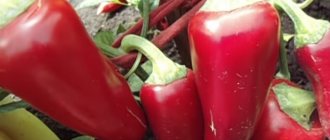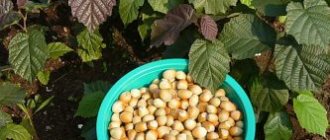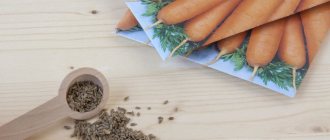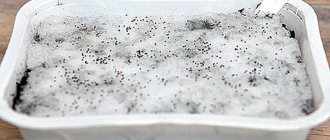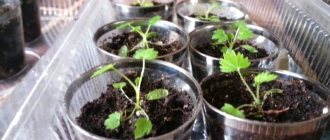- March 30, 2019
- Flowers
- Michael
Clematis is well known to domestic gardeners. But it takes a lot of time and effort to raise a capricious beauty. However, having mastered the propagation of clematis by seeds and having enough patience, every summer resident or gardener will be able to decorate his plot with unusual, amazingly beautiful flowers. Therefore, learning about this plant and the features of caring for it will be useful for every lover.
Other names
Before telling you how to grow clematis from seeds, it would be useful to understand the terminology. After all, clematis has a number of other names, which can cause certain difficulties and confusion.
This plant belongs to the Buttercup family. And in Latin its name is indeed clematis. But in the Russian language, the more familiar one is more common - “prince”. Yes, this is exactly the simple, but still pretentious name our ancestors gave to the plant. However, the flower also has other nicknames, for example: wild hop, atragene, bindweed, pine hop or branch. So, having heard any of these words, you can be sure that the conversation is about delicate clematis.
What types of clematis are there? photo
The genus of perennial flowering vines Clematis or "Clematis", belonging to the Ranunculaceae family, includes more than 200 species with diverse forms, growing everywhere in subtropical and temperate climates. Plants are also diverse in external characteristics, clearly visible in the photo.
Typical representatives have curly climbing shoots, leaf cuttings from 3 to 10 m clinging to support, sometimes woody below, erect up to 150 cm, others are flexible, herbaceous, creeping. The root system of some species is fibrous with thin, light brown roots, while others are taprooted with thick, dark brown strong roots penetrating up to 1 meter deep.
A special feature of the flower is its colorful perianths, which act as petals and have numerous shades of white, red, blue, purple, and yellow. Based on flower size, clematis are divided into small-flowered (2 - 7 cm) and large-flowered (8 - 25 cm). The flowers are solitary or collected in inflorescences (panicle, semi-umbrella, corymb). Some species have a pleasant aroma.
Each species or variety also has different leaves. In some they are imparipinnate, complex, consisting of 3 to 7 leaflets, in others they are simple, opposite. The surface of the leaf also varies: bare or pubescent, sometimes leathery. A feature of many species is the ability of leaves to wrap around a support with cuttings, holding their weight.
Clematis bloom profusely, for a long time, continuously from May to September or twice a season. The first flowering occurs on last year's stems, the second - on newly emerged shoots.
Shoots of herbaceous species die off in the fall and grow back from the basal buds in the spring. Woody forms retain stems. Careful attention to the plant preserves its decorative properties for up to 20 years.
Important! Like all representatives of buttercups, clematis juice contains poisons that cause skin irritation; if ingested, it can depress the nervous system.
Appearance of the plant
Some people, when they plant clematis seeds, have a vague idea of what kind of plant they will get in a few months or years. Of course, this is a serious mistake - after all, an experienced gardener would prefer to know exactly what the new inhabitant of his garden or dacha will look like.
However, accurately describing the appearance of the plant is not easy. If only because there are many varieties of clematis. And they are very different from each other - the similarities between them are much less than the differences. Some are herbaceous, that is, they look like most of the inhabitants of flower beds. Almost all herbaceous plants die off in the fall after the first serious frost.
There are also semi-shrub clematis, for example whole-leaved and hogweed. They have a woody lower part, which persists for several years, and will delight the summer resident with fresh shoots and flowers every spring.
But for most gardeners, the most interesting varieties of clematis are those that resemble vines. First of all, these are grape and purple clematis. If you place a vertical support near them, the plant will climb along them, wrapping around the base and giving the area special elegance and sophistication.
Even the root system of different varieties is very different - both fibrous and taproot are found.
Therefore, you should approach the selection of a suitable variety very responsibly. Alas, even with detailed study, a 100% match is not guaranteed. It is no coincidence that many lovers are interested in whether the clematis variety is preserved when propagated by seeds. However, the differences in this case are usually minimal - only the size and, possibly, the color of the flowers. The main features are still preserved.
Which species are best propagated by seeds?
Clematis alpina, alpine
A large vine reaching three meters in length. For planting, loose, drained or neutral soil is needed. Flowering time: May – September. This clematis produces a large number of seeds and successfully reproduces with them. They sprout within 2-8.5 months.
Clematis armandii, Armanda
Length – up to five meters. Flowering occurs in May and is often very abundant. But the seeds are not set every year. It germinates above ground within 70–108 days.
Clematischeracleifolia, hogweed
The height of the plants reaches one meter. The color of flowers does not please us with variety: blue is the most common, others are almost never found. This type of perennial, or rather its shoots, do not curl around the supports, they only rest. This is due to the fact that the stems of clematis are rigid and, accordingly, do not bend. Blooms from late June to early September. Well suited for areas planted with flowers or shrubs. Longevity grains are small and germinate above the ground. They germinate in different ways, but, in principle, in the range from 1.5 to 9.4 months.
Clematisvitalba, grape
A profusely flowering, fast-growing perennial vine. Height – up to 15 m, winter-hardy. The flower of the plant reaches 3 cm in diameter. The vigorous vine will delight you with fragrant flowers of delicate white-cream color throughout the summer, from June to August. Sets a large number of small seeds. It germinates above ground, the growth range varies from 1.5 to 3.3 months.
Clematis origntalis, eastern
Clematis, reaching six meters. The stem is ribbed, climbing, semi-woody, slightly reddish. The plant is covered with fluff. The flowers are yellow, often with a red tint on the outside, and there are quite a lot of them during the blooming period, which lasts from July to August. The achenes are compressed, have a thick edge, with light fluff, and are up to 3.5 mm long.
How to properly store seeds?
Before you figure out how to plant clematis seeds, you need to know how to properly store them. Experienced gardeners know very well that improper storage of seeds often leads to their germination being significantly reduced. And if the technology is grossly violated, then a whole handful of seeds may not produce a single new sprout.
The shape of the seeds is quite interesting. This is a small, peculiar nut that has a long whitish-silver fly on one side, and a slight point on the other. The fly allows it to be carried by the wind over a considerable distance, and thanks to its pointed nature, the seeds are easily buried in the ground.
The optimal storage temperature is in the range of +18…+23 °C. In this case, the humidity should be low - otherwise the seeds may awaken from hibernation much earlier than required. Paper bags or canvas bags are best for storage. They should not be kept in plastic bags for a long time - the non-breathable material leads to the fact that seed germination is sharply reduced.
With proper storage, high similarity remains for 2-4 years, depending on the clematis variety.
Of course, it is best to use fresh seeds for sowing - last year's, rather than old ones collected several years ago. If the storage rules are followed, then they provide the greatest germination.
When to plant clematis seeds
Seed formation occurs in ovary capsules. As they ripen, they open up, revealing fluffy balls of oval seeds and flying fibers.
Based on the size of the seeds, they are classified into:
- Large ones. Sizes vary from 5x6 to 10x12 mm. Characterized by long germination (up to a year). A three-month stratification is required. Sowing is carried out in the fall.
- Average. The size ranges from 3x5 to 5x6 mm. Germinates in 12-25 weeks. Not only the stratification procedure is required, but also soaking in a warm liquid for 7 days. Preparation of the material begins in January.
- Small (1.5x3 and 3x5 mm). They sprout in 2-4 weeks. Planted directly into the ground without additional preparation in March-April.
Related article:
How to choose the “keys” to clematis
When will the seeds hatch?
If you are interested in how to plant clematis with seeds, then you should definitely find out in advance how long it takes for the plant to germinate. Otherwise, you may face unpleasant consequences.
The fact is that the seed hatching period is quite long. Moreover, the larger the planting material, the larger it is.
For example, the smallest ones, ranging in size from one to three millimeters, usually sprout in one to three months. For larger ones (three to five millimeters), the period increases to two to six months. They are best suited for propagating clematis by seeds in the fall. Finally, the largest seeds - from five to ten millimeters - can lie in the ground for a whole year before the long-awaited sprout appears.
Well, the size primarily depends on the variety. Therefore, there is no need to rush here. For example, if you plan to grow hot, Siberian or alpine clematis, then get ready for the first shoots to appear only after a year. All this time you will either have to look at an empty flowerbed, or plant it with annual crops so that it does not become empty.
Growing clematis
Clematis propagates by seeds, but growing it this way is not an easy task. This requires experience, knowledge, and significant effort. However, clematis planted from seeds adapts to the climate and soil of the place where it is grown.
It is worth immediately noting that hybrid varieties do not produce seeds. Another feature is that the seeds of varieties with large flowers are mostly nonviable due to the characteristics of pollination. Propagation of clematis by seeds is only suitable for species, as well as for selection.
Clematis seeds are divided into 3 types and differ in size, as well as in the fact that, depending on this, the resulting sprouts sprout unevenly. Also, in some species, when planting, the seeds are covered with an earthen mixture, and they grow underground. Others are sown on the ground and grow on the surface.
Species with seeds up to 1 cm in diameter grow up to 8 months, growth is uneven. They are planted immediately after harvest in autumn or early winter. These are Duran, Jacquemman, woolly and a few more. Given this, gardeners prefer their vegetative propagation.
Seeds up to 5 mm in diameter produce seedlings that germinate for about six months. They are sown in mid-January. These are whole-leaved, Manchurian, Chinese and other types.
Plants with seeds up to 3 mm germinate quickly, within a maximum of 4 months. They are sown in early spring.
Planting seeds and seedlings
Before sowing, the seeds are prepared. They are kept in water for a week and a half, which is changed several times a day. Then they are evenly placed in one layer in boxes filled with a moistened earthen mixture of peat, earth and sand, sprinkled with sand on top.
After compaction, the box is covered with glass or other translucent material and placed in a place with an air temperature of up to thirty degrees Celsius. Crops are regularly watered and weeded.
It is worth noting that the emergence of clematis from seeds depends on the external conditions of the period when they are collected. The best quality is obtained from seeds collected in dry and hot climates: in the subtropics and in the south.
If the air humidity is high and the temperature is low, the quality of the seeds will be lower.
The best germination rate is for seeds that are collected the same year they were planted. But if necessary, they are stored for up to four years in paper bags in a room at room temperature.
In another article we described another Duranta plant.
After the sprouts appear, the boxes with them are placed in a lighted room, protected from direct sunlight.
When the seedlings have their first full-fledged leaves, they are planted in separate pots and grown under the same conditions before planting in open soil.
Planting in open ground
They are moved to the garden in the warm season, when the night frosts end. Choose a lighted place with shade at midday, protected from drafts.
A mound or artificial embankment is better suited so that the meter-long root does not begin to rot due to its proximity to water. You should also not allow water from the roof or fence to drip onto the sprout.
The soil for planting is selected to be drained, loamy, slightly alkaline, with sufficient nutrients.
Before planting, you should carefully inspect the roots of the sprout and moisten them by immersing them in water for 3 hours when dry. The seedling must have at least one stem.
A hole for planting one sprout needs to be 60 cm deep, wide and long. The distance between seedlings is 20 cm.
The bottom of the pit is drained with crushed stone or pieces of brick. Poor soils are improved by adding an earthen mixture of peat, sand, compost, mineral and organic fertilizers. It is best to improve soil fertility a year before planting sprouts.
After this, soil is poured onto the drainage layer in a heap. A shoot is installed on it, the roots are carefully straightened. Then the hole is filled with soil or earthen mixture so that there is still 8 cm left to the edge of the hole.
The trunk of the seedling is immersed in the soil until the first node. After this, watering is needed, which requires one bucket of water. Then the excavation is mulched with peat and gradually filled with soil over the course of a year.
To grow roots and increase lushness, plants are periodically pinched.
In preparation for wintering, the seedlings are covered with spruce branches.
Next spring they are transplanted to a new location in one row, deepened by 5 cm with a distance of half a meter between seedlings. After this, the stems are shortened, leaving several nodes on them.
The third and final transplant is done three years later, after the roots have developed - the appearance of at least three 15 cm roots. From this time on, the plant constantly develops in this place.
Since clematis grows greatly over time, supports 2.5 m high are installed to support the stem in the wind.
It is allowed to plant the plant in the garden in autumn in areas with a hot subtropical climate. The vegetative buds of the sprout must be developed.
The planting rules are the same as in the spring, the only difference is that the hole is filled to the top with soil.
After this, a layer of dry leaves is poured onto the soil, and the seedling is covered with material. In the spring, the leaves are removed, and a 10 cm layer of soil is also removed to facilitate the growth of the seedling. The resulting depression is gradually filled with soil as the plant grows.
Preparing for sowing
In order for clematis propagation by seeds at home to be successful, they need to be properly prepared. Otherwise, it will not be possible to achieve high germination rates.
The best way to achieve the desired result is bubbling. To do this, you need to take a liter jar and pour a soda solution into it - about 4 teaspoons per liter of water. You need to pour the existing seeds into this solution, and then connect an aquarium or any other compressor. The bubbling procedure in the soda solution should last at least 5-6 hours.
After this, the liquid is drained and ordinary clean water is poured into the jar. Then bubbling continues for another 4-5 days. In this case, you need to change the water three times a day.
The next step is to place the seeds in suitable stimulants. This can be a solution of succinic acid, “Epin”, “Tsitovin” or “Humate”.
When this procedure is completed, you can move on to the next step.
How to grow clematis from seeds?
A perennial plant from the ranunculaceae family, the handsome clematis will not leave any gardener indifferent. The most popular are plants in the form of vines, which create incredible decorations on arches and fences. Even an inexperienced amateur gardener can grow a perennial from seeds, having decided on the variety and adhering to simple rules for growing.
When and how to collect seeds for planting?
Clematis seeds begin to ripen in summer and early autumn, it all depends on the variety. Their appearance and size also depend on the variety and are large, medium and small. Small-flowered species have a lot of seeds, while large-flowered species have few.
Externally, the seeds look like nuts and seeds with fluffy tails attached to them on thin legs. By autumn, the flower transforms into a silver-white head of nuts with tails. Each nut contains a seed inside itself. When the fluffy head darkens and the seeds are brown and scatter when touched, you can start collecting them. Then they are sorted, healthy and undamaged ones are selected.
Freshly harvested seeds have the best germination rate. They are stored at +20 in paper bags for 2 to 4 years.
Processing and preparing seeds for planting
Before planting seed material, it is subjected to processing, which helps remove the seeds from dormancy and increases germination, hardens and strengthens them from diseases.
Experienced gardeners distinguish two methods of preparing seeds:
- Cold stratification.
- Bubbling.
The stratification method helps remove seeds from a state of natural dormancy and initiate growth processes. The seeds are placed in a container with damp coarse sand and exposed to the cold. Periodically, as the sand dries, it is additionally moistened. In this state, the seeds are kept for up to three months at +5 degrees, then the container is buried in the snow. When spring comes, the seed can be sown in the ground. With this method of preparation, they will begin to sprout vigorously within three weeks after sowing.
The bubbling method is based on the fact that the seeds are kept in a vessel with water that is saturated with oxygen. For these purposes, gardeners often use an aquarium compressor. Air is pumped into the container for 30 minutes. After this, the seed is removed and laid out on a cloth to dry.
Thanks to this method, seed germination increases dramatically, and sprouts begin to appear as early as 10-12 days.
Some gardeners recommend germinating seeds in peat tablets before planting in the ground. To speed up the germination of large seeds, they are freed from their hard shells. Before sowing, seeds can also be kept for 30 minutes in a solution of epin or succinic acid, etc.
Planting seeds and selecting soil
Clematis prefer and grow well in loose, breathable sandy loam or loamy, slightly acidic or alkaline soil, saturated with humus. For seedlings, a soil mixture is ideal, which includes soil, humus, sand, ash and, of course, drainage. The prepared container is filled with the mixture and the seeds are sown superficially, sprinkled with sand and rolled. Watering is carried out regularly through a tray.
For planting in open ground, beds are prepared with a distance between rows of 30 cm. Seeds are introduced into the soil 1-3 cm and sprinkled with sand, the soil is mulched with sawdust. Sowing begins in April.
How to care for seedlings?
When the first pair of leaves appears, you can carefully pick. The strengthened seedlings are planted in the ground, in a place protected from drafts. As the shoots grow, they are pinched for the fastest growth of green mass and branching.
Seedlings need regular watering, loosening, and fertilizing. The above-ground parts of plants develop much more slowly, since all the strength is spent on growing roots. Growing clematis need constant support for support. When planting in a permanent place, the growth of the plant is taken into account.
Flowering begins two years after sowing, and if all sowing rules are followed, already in the first year.
Planting seeds
When planting clematis seedlings with seeds, it is very important to create a suitable substrate. The optimal solution is a mixture of sand, peat and garden soil in equal quantities. However, in extreme cases, you can do without peat - but in this case, the seedlings will grow a little slower.
If possible, it is best to use separate cups for each seed to make replanting easier. Otherwise, a box about 15 centimeters high will do. Drainage is laid at the bottom - broken bricks or large pebbles. The substrate is poured on top.
The landing must also be correct. It is advisable to maintain a distance between seeds. There is a distance of about eight centimeters between the rows, and five centimeters between the holes. There is no need to deepen the seeds - one centimeter is enough.
After this, the soil is watered abundantly from a sprayer.
Clematis use in landscape photo
Many flower lovers know clematis as a garden vine with incomparable flowers, decorating gazebos, pergolas, fences, camouflaging old buildings, giving an extraordinary charm with exotic flowers:
- Hybrid Frederic Chopin (light blue large single-row flowers with wavy edges of petals and cream stamens, grows up to 3 m, blooms from June to September).
- Lady Betty Balfow (grows 300 - 400 m, large 10 - 15 cm blue-violet flowers with white fluff in the center of the pointed petal and white stamens, blooms profusely from July to September).
- Krakowiak (frost-resistant, unpretentious to soil and location, blooms from mid-June to September, pink flowers with a wine-red stripe, petals with a corrugated edge).
With a woody stem, clematis add beauty to microborders; they can be grown in flowerpots and balcony containers:
- Violet Elizabeth - 1.5 m high, pink, double flowers, blooms 2 times (May - June on last year's shoots, and in September blooms on newly emerged ones);
- Stefan Fanzak - bright blue with a light stripe in the center, the petals are strongly corrugated, blooms twice, grows up to 1.5 - 2 m. Snow Queen - blue-white flowers with red stamens, up to 20 cm in diameter, a rare variety, blooms continuously, long, abundantly.
- The Rooguchi variety is herbaceous, can be used as a ground cover plant, the stem grows up to 3 m, the flowers are small, bell-shaped, violet-blue with light edges.
It is acceptable to grow the Tangut species on an alpine hill.
Important! Clematis are not suitable for planting on swampy soils and those flooded by spring floods. The minimum volume of a pot for growing clematis on the balcony is at least 15 - 20 liters.
Two stages of stratification
In order for the seeds to germinate as smoothly as possible, it is necessary to recreate the same conditions that they experience in natural conditions.
Experts call the first stage warm stratification. The box with the planted seeds should be placed in a warm, slightly shaded (without direct sunlight) place. The optimal temperature is within +16…+20 °C. It would be a good idea to cover the box with glass or transparent film.
After this, you can proceed to the second stage of stratification - cold. The box is placed in a cold place - for example, on a loggia, in a cellar or refrigerator. The temperature should not exceed +4…+6 °C. On the one hand, this will harden the plant, and on the other, it imitates winter cold, creating the illusion of the changing seasons. The box should be left in a cold place for one and a half to two months.
After the set time has passed, the box is again transferred to a warm and bright place. Within a month or a month and a half after this, the first shoots may appear. However, sometimes you have to wait another six to eight months. After all, as mentioned above, the seeds of some varieties germinate only after a year.
Of course, throughout the entire stratification period you need to ensure that the substrate does not dry out. But excessive watering should also be avoided - moistening the soil with a sprayer is quite enough.
Seed stratification
Before sowing, seed material is prepared. Selected quality clematis seeds are stratified. Hardening increases the ability of seeds to resist diseases and increases viability. There are many ways of stratification carried out by professionals and amateurs. For example:
- The seeds in a container are mixed with wet sand, placed in a refrigerator at a temperature of + 5 degrees for 2 months, stirring and moistening periodically.
- The grains, placed in a container, are placed in the freezer for 2 - 3 months.
- The grains are frozen for 2 days, taken out of the freezer, placed in a bright, warm place for 1 hour, and put back to freeze. Repeat 3 times.
You can harden seeds already planted after bubbling. To do this, prepare nutritious soil from garden soil, peat and sand (1:1:1). Pour into a container with drainage, sow the seeds (taking into account the type of germination, maintaining the distance between the seeds), and cover with glass.
Stage 1 of stratification (warm) - the planting container is exposed to light and heat (+ 16 - 20) for 2 weeks.
Stage 2 - cold. Place the seeds in the bottom of the refrigerator (+4 - 5) for 1.5 - 2 months, monitoring the condition of the soil, moistening it in time.
After the designated time has passed, expose the container to light and heat again. After 3 - 4 weeks, early seedlings appear, but the time of germination can be delayed for 8 months. There are other methods. Any of them is applicable for clematis.
Important! Clematis seeds are not freed from the hard skin, since the grain and shell grow together.
Planting in open ground
It is advisable to prepare the soil for transplanting seedlings in the fall. To do this, holes measuring 40 x 60 centimeters are dug. Drainage is laid at the bottom - expanded clay, crushed stone or broken brick - in a layer of about 15-20 centimeters. The rest of the volume is filled with fertile soil or compost.
It is necessary to transplant clematis from a box into open ground only when the threat of night frosts is definitely excluded. For central Russia this is the end of May or even the beginning of June. An unstrengthened plant may well be destroyed by even a short drop in temperature.
The soil in the box needs to be well moistened, then carefully and quickly remove the sprout along with the substrate and plant it in the designated place. It is important not to damage the fragile root system. That is why it is better to use separate cups - here the roots of two sprouts will definitely not intertwine and there will be no danger of damage.
All that remains is to water the soil generously and mulch it well - pine needles, sawdust or grass will do.
Rules and specifics of sowing
When starting to propagate clematis, it is important to take into account the type of germination of their seeds, on which the sowing method depends. It happens:
- underground - the growth point is activated, being under the surface of the soil, the cotyledon leaves open there;
- aboveground - the growth point should be located in the air, the cotyledon leaves open above the soil level;
- intermediate - the growth point is in the ground, and the cotyledon leaves are on the surface.
The type of germination is a varietal (species) characteristic, individual for each crop variety.
Cotyledon leaves located above the soil level
In open ground (in specially prepared beds), only those plants can be sown whose seeds are capable of natural winter stratification and are characterized by relatively high germination - these are species clematis (Tangut, Manchurian, etc.). In their homeland (China, the Far East) they form huge thickets, reproducing by “self-sowing”. In central Russia they are sown in the spring (March-April).
The remaining varieties are best grown through seedlings . The process looks like this step by step:
- At the bottom of a container (pot or box) 15-20 cm high, a layer of drainage (5 cm) is placed, and then a substrate (10 cm), consisting of garden soil with sand in a ratio of 2:1 or earth, sand and peat in equal parts. The soil is well moistened;
- Place the prepared seed depending on the type of germination. Seeds of the “aboveground” type are simply laid out on the surface at a distance of 5-7 cm from each other; “underground” and “intermediate” types - covered with a layer of sand 1-1.5 cm thick;
- Irrigate the crops with water from a spray bottle. The containers are covered with glass.
Further actions depend on the selected germination method, which may involve stratification of crops or obtaining seedlings exclusively in warm conditions.
“Above-ground” type seeds are laid out on the surface of the prepared soil and irrigated with water
Large and medium-sized seeds are usually sown for seedlings at the end of November. Small clematis begin to appear in March-April. As they germinate, they are planted into individual containers (for growing in a greenhouse) or directly into beds. Most experts agree that this should be done as early as possible, preferably at the age of the cotyledon leaves or after the appearance of the first pair of true leaves. Seedlings picked later than this period become sick more often and grow more slowly.
The clematis culture is characterized by an extended period of germination. Even with intensive pre-sowing treatment, seeds of many varieties can germinate from 3-4 weeks to several months. At the same time, experts note that early-germinated seedlings of large-flowered hybrids are subsequently less decorative than their “brothers” who germinate in the middle and late periods. Therefore, the sprouts are removed from common containers very carefully, and the seedling boxes themselves are placed in greenhouses for the whole summer to give the remaining seeds in them time to germinate.
Proper care
In general, caring for clematis is not too difficult.
It is necessary to water it regularly if it does not rain heavily at least once a week. In addition, once a month it would be a good idea to water the flowers with a solution of mineral fertilizers containing potassium, phosphorus and nitrogen.
During the first three years, it is worth adding humus flavored with woody gold. It is advisable to carry out this procedure in early spring or late autumn. Thanks to this, the plant will be stronger and healthier.
Some gardeners who grow clematis from seeds are concerned that in the first weeks after transplantation the plant hardly develops. However, there is no reason to worry here. The fact is that clematis spends all its resources on creating a powerful root system. And after this, the above-ground part will develop - new leaves will appear, the trunk will strengthen and lengthen.
Growing seedlings
Caring for young clematis comes down to removing weeds, watering, regularly loosening the soil and hilling up the root zone to protect it from overheating. Plants planted in open ground are given shading until they have 3-4 pairs of leaves. At this point, the tops of the shoots are usually pinched to enhance the tillering of the vines. During the first growing season, plants are fed 2-3 times with a solution of complex fertilizer.
Clematis seedlings prepared for planting in a permanent place
In autumn, seedlings are prepared for wintering: the stems are cut, leaving no more than 3 internodes. For most varieties, the area above the roots is mulched with a mixture of clean sand and wood ash. If there is a threat of freezing, an air-dry shelter is built over the bushes.
Clematis grown from seeds can be planted on the site next fall or even in the spring if they overwintered in a greenhouse . However, according to the majority of breeders, seedlings that were grown in open ground compare favorably with “greenhouse” specimens in many ways.
The rules for planting in open ground are described in detail in the articles posted on our website.
The time it takes for vines to reach full decorative quality depends both on the plant variety and on how properly it is cared for. Unpretentious species of clematis usually bloom in the second year. As for the more “delicate” hybrids, subject to two-stage stratification of crops, in the second season flowers appear on only 10% of seedlings. About 75% of plants obtained in this way bloom in the third year, and the remaining 15% only in the fourth.
Many members of the family fully reveal their decorative properties only in the 3rd-4th year of the growing season.
Growing clematis from seeds is a difficult task, but quite doable. It is important to find out in advance as much as possible about which processing and sowing methods are preferable for propagating your particular flower. Choosing the optimal algorithm of action in this case will be the key to success.
Can it be grown in open ground?
Unfortunately, most of our country is unsuitable for growing clematis in open ground. It's all about the possibility of late spring frosts. In some regions, even in mid- and late May, temperatures at night may well drop below zero. This will almost certainly destroy young, fragile shoots.
To prevent this from happening, you have to use seedlings. Yes, this significantly complicates the process and forces you to spend much more time and effort. However, the result is worth it! If you did everything correctly, then in a few years you will be able to admire the magnificent clematis on your site.
What types of clematis should be propagated by seeds?
Clematis is one of the bushes that are incredibly easy to grow at home. That is why its popularity is growing rapidly every year, and tireless breeders periodically develop new varieties. But it is not necessary to have many years of experience or a whole store of knowledge in order to grow such a bush on your site.
It is enough to know a couple of simple rules:
- Species Zhiguns do not have uniform germination, so it is recommended to propagate them vegetatively, like clematis with large grains, because they germinate for a fairly long period of time.
- Zhiguntsi from small grains sprout faster and more friendly.
- The usefulness of seeds depends on weather conditions. Thus, seeds of the same species in different years may not be completely complete. Typically, during cool, rainy periods, the number of quality seeds is significantly reduced. But in the southern territory everything is different: there are more seeds and the quality is better.
Fertilizers for clematis
It is necessary to think about feeding clematis from the second year of life, since the seedlings have enough nutrition in the planting soil of the first year of planting, but further growth and abundant flowering depend only on the applied fertilizers. To avoid soil depletion, fertilizers are applied in the spring at the beginning of the growing season, preferably nitrogen-containing ones: a solution of manure (1 liter of slurry per 10 liters of water) or nitrophoska, ammonium nitrate (20 g per 10 liters of water).
Lime milk (0.5 liters of slaked lime or dolomite flour per 10 liters of water) will help neutralize the acidity of the soil and protect against fungal diseases. During flowering, water with a complex solution: a solution of ash, bone meal, or other complex fertilizer. After flowering it is also complex. In autumn and spring, it is advisable to treat the soil near clematis with a solution of copper sulfate against fungal infections.

